If you are a nature lover, meaning not only plants but also animals, this is the article for you! So keep reading.
Having a garden full of life is one of the greatest things you can have, so making a good selection of plants is a must in order to achieve this goal.
If you do this, I assure you that you will not regret it. It will be exciting to see those little winged creatures visiting your garden and feeding on your plants.
An interesting fact you might want to know is that hummingbirds are attracted to certain plants, especially flowers, because these plants produce nectar, which is also a rich source of sugars essential for the energy of hummingbirds.
Moreover, flowers have bright colors and specific shapes that allow hummingbirds to access the nectar with their long beaks and specialized tongues.
So let’s get started with the list of flowers that will help you attract hummingbirds.
1. Sage
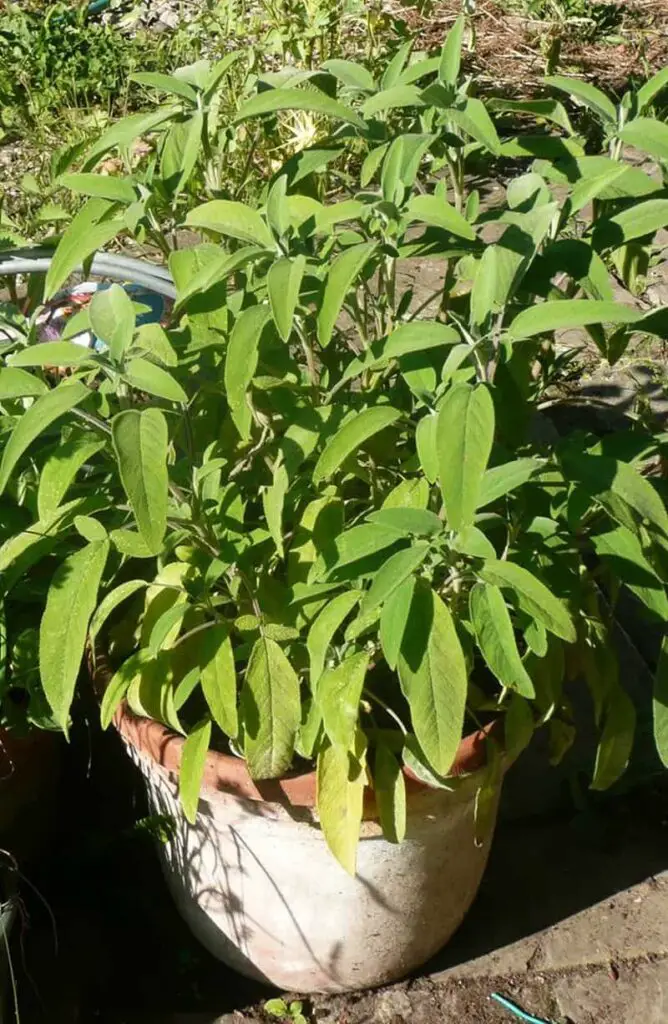
Sage, belonging to the Lamiaceae family, is an herbaceous plant known for its numerous varieties and distinctive characteristics. Its leaves are often aromatic and covered in tiny hairs.
Sage flowers can vary in color, ranging from shades of blue, purple, pink, white to red, and are often grouped in spikes or clusters.
This plant is valued both for its ornamental beauty and its culinary and medicinal utility.
Sage exhibits notable resilience to adverse weather conditions and is adaptable to a variety of soils, making it a popular choice for both ornamental gardens and herbal gardens. Additionally, many species of Sage are attractive to pollinators, including bees and hummingbirds, highlighting its ecological value in the garden.
2. Lantana
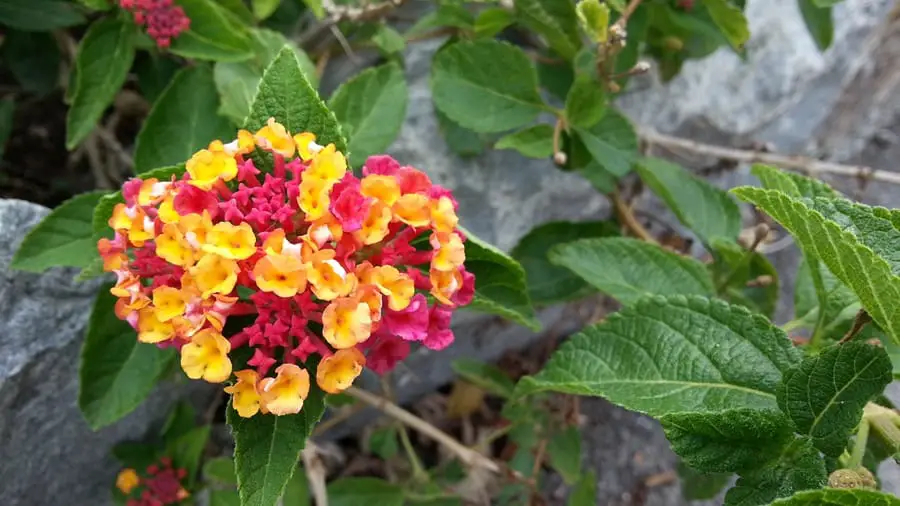
Lantana, a perennial shrub belonging to the Verbenaceae family, stands out for its vibrant array of colors, ranging from yellow, orange, and pink to red and purple.
Its flowers, grouped in globular inflorescences, attract butterflies and other pollinators, making it a popular choice for ornamental gardens and landscaping.
Lantana is hardy, easy to care for, and can adapt to a variety of climatic conditions and soil types, making it ideal for warm and sunny climates.
Additionally, its dense and aromatic foliage, along with its ability to bloom for extended periods, makes it a versatile option for garden borders, pots, and flower beds.
However, it’s important to note that some varieties of Lantana can be invasive in certain regions, so it’s advisable to research before planting in areas where it could become an ecological issue.
3. Brugmansia (Angel trumpet)

Brugmansia, also known as “angel’s trumpet” or “floripondio,” is a small shrub or tree native to South America, cherished for its large and striking hanging flowers that emit an intoxicating fragrance at night.
Its flowers can be white, yellow, pink, or orange, and they often bloom abundantly during the warm season.
Brugmansia foliage is typically dense and intensely green, creating an attractive contrast with the lush flowers.
However, it’s important to note that all parts of the plant, including the flowers, are highly toxic if ingested, so caution should be exercised when handling, especially in environments where children or pets may be present.
Brugmansia prefers warm and sunny climates, as well as rich, well-drained soils, and can thrive both in pots and in the ground, adding a tropical and exotic touch to gardens and landscapes.
4. Fuchsia

Fuchsia, also known as “lady’s eardrops” or “queen’s earrings,” is an ornamental shrub appreciated for its elegant and distinctive hanging flowers that often display a combination of bright colors such as red, purple, pink, and white. Its bell or trumpet-shaped flowers attract hummingbirds and other pollinators, making it a popular choice for gardens and landscapes.
Fuchsia thrives in cool and shaded climates, although some varieties can tolerate partial sun. Its stems are usually slender and flexible, and the foliage varies in shades from dark green to light green, often with a slightly serrated or scalloped edge.
This plant is relatively easy to cultivate and adapts well to hanging pots, baskets, or as a border plant in gardens and balconies, adding a touch of elegance and color to any outdoor space.
5. Aquilegia (Columbine)

Aquilegia, commonly known as “columbine,” is a perennial herbaceous plant distinguished by its exquisite unique bell-shaped flowers with long, curved spurs resembling claws.
These flowers come in a wide range of colors, including shades of purple, blue, pink, white, and yellow, often presenting striking combinations.
Aquilegia is a delightful addition to cottage gardens and natural landscapes, as it adds a touch of wild charm.
In addition to its aesthetic appeal, this plant is resilient and low-maintenance, preferring well-drained and partially shaded soils.
The flowers of the Aquilegia are also a source of nectar for pollinators such as bees and hummingbirds, making it a valuable choice for promoting biodiversity in the garden.
6. Heuchera (Coral bells)
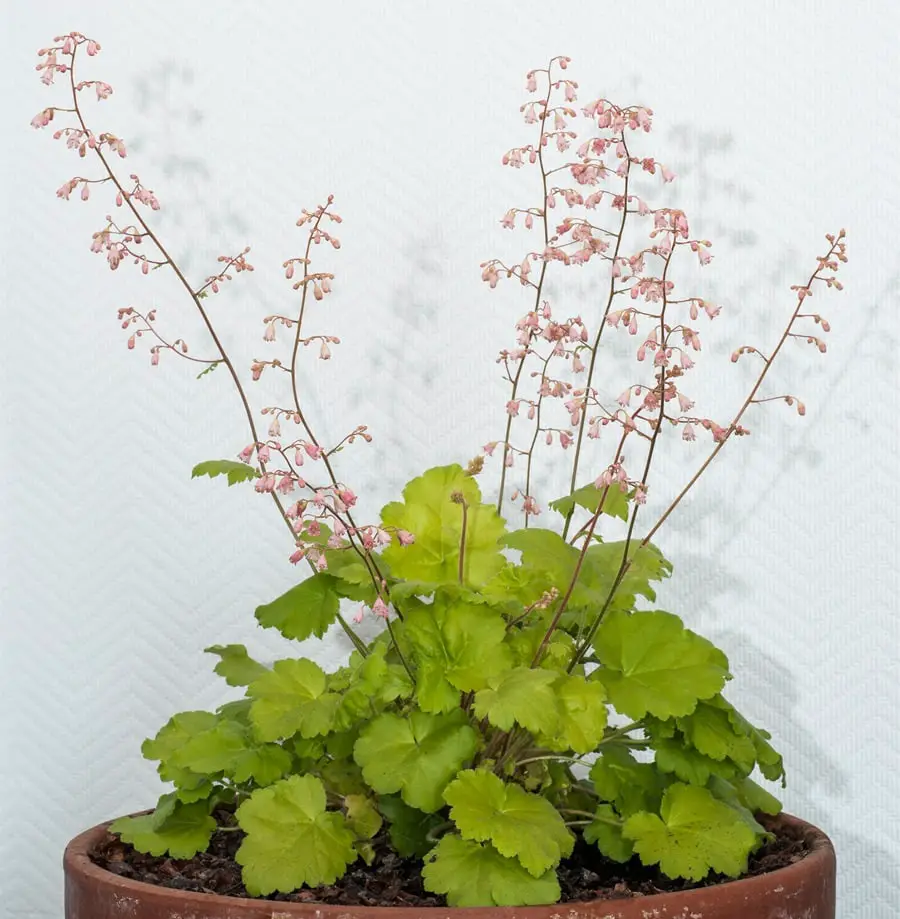
Heuchera, also known as “coral bells,” is a perennial plant cherished for its attractive ornamental foliage and its ability to add color and texture to gardens.
Its leaves come in a wide range of colors, including shades of green, purple, red, silver, and bronze, with some varieties featuring unique patterns and striking contrasts.
Heuchera flowers, which emerge on thin stems during spring and summer, are small and usually white, pink, or red, attracting pollinators such as bees and butterflies.
This plant is resilient and adaptable, thriving in a variety of light and soil conditions, from partial shade to full sun and moist or dry soils.
Additionally, Heuchera is ideal for garden borders, containers, and beds, adding visual interest and beauty throughout the growing season.
7. Monarda (Bee Balm)
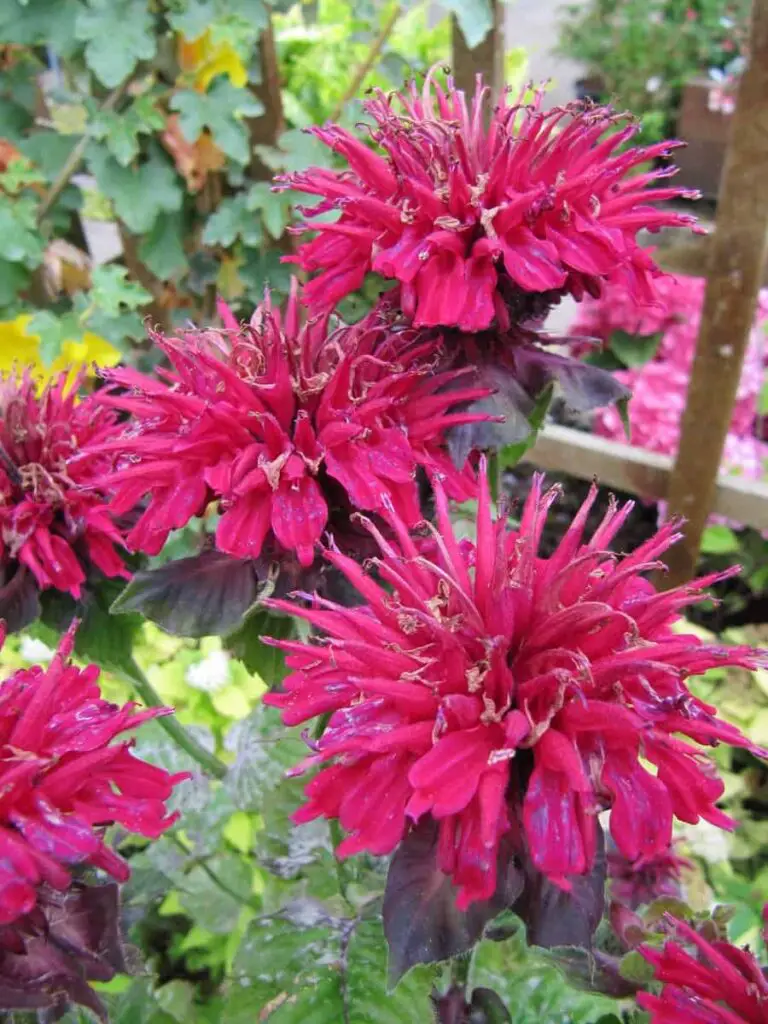
Monarda, also known as “bergamot” or “bee balm,” is a perennial herbaceous plant valued for its showy and fragrant tubular flowers clustered in spikes, which can vary in color from bright red to purple and pink.
Its distinct aroma attracts pollinators such as bees, butterflies, and hummingbirds, making it an attractive choice for gardens and landscapes seeking to promote biodiversity.
In addition to its floral appeal, Monarda is appreciated for its aromatic and resilient foliage, which often emits a pleasant scent of mint or citrus when touched.
This plant is hardy and easy to cultivate, preferring moist and well-drained soils, as well as sunny or partially shaded exposures.
Monarda is an excellent option for garden borders, flower beds, and natural areas, providing color, fragrance, and benefits for wildlife throughout the growing season.
8. Petunia
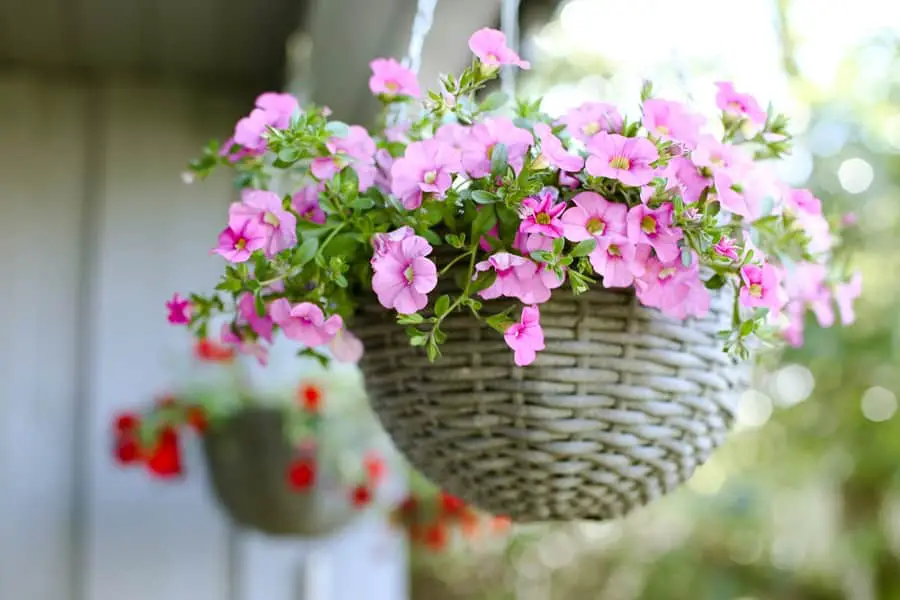
Petunia is an annual plant widely cultivated for its striking and abundant trumpet-shaped flowers that come in a wide range of vibrant colors, including shades of pink, purple, white, red, and yellow. Its flowers can be single or double, and its foliage is dark green and generally oval-shaped.
Petunia is appreciated for its long flowering season and its ability to tolerate a variety of climatic conditions, from full sun to partial shade.
It is an excellent choice for flower beds, hanging baskets, and garden borders, as it adds a touch of color and joy to any outdoor space.
Additionally, petunias are easy to care for and low-maintenance, making them a popular choice for both beginner and experienced gardeners..
9. Penstemon
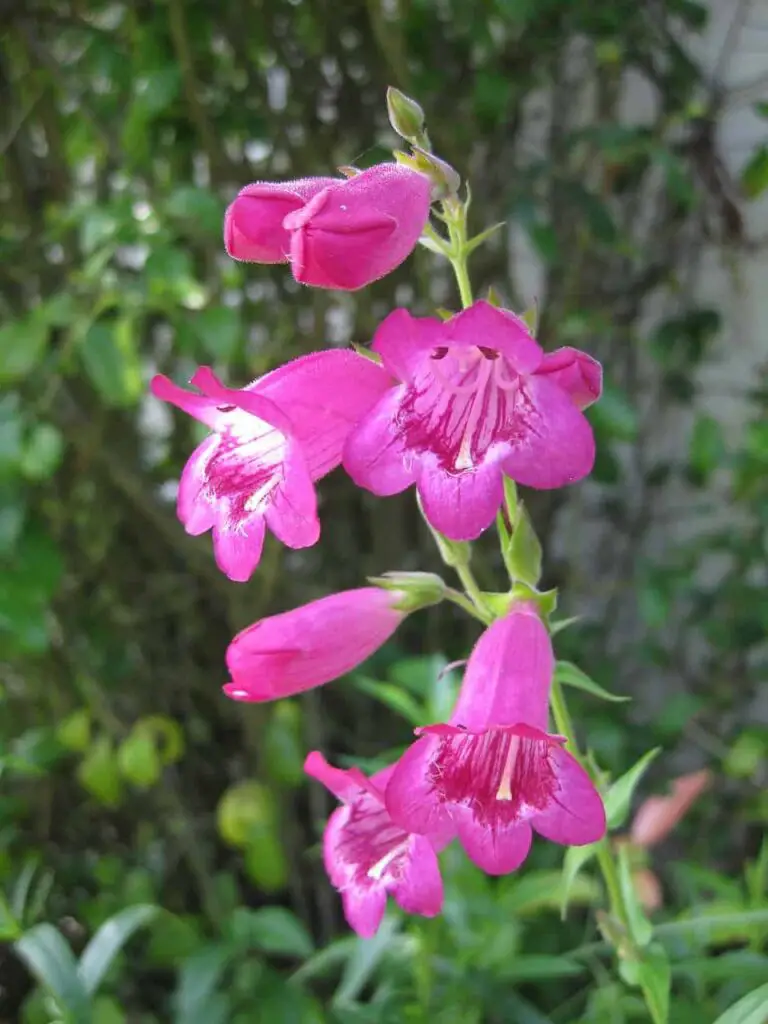
Penstemon is a perennial plant known for its striking and elegant tubular flowers that come in a variety of colors, including shades of pink, purple, red, white, and blue.
These flowers, which often have attractive throats and are grouped in tall, slender spikes, are highly attractive to pollinators such as bees and hummingbirds, making Penstemon a valuable choice for gardens seeking to promote biodiversity.
Its dark green foliage is generally lanceolate or serrated, and some varieties have leaves with silver or reddish tones that add visual interest even when the plant is not flowering.
Penstemon is resilient and adaptable, preferring well-drained soils and sunny to partially shaded exposures.
It is a popular choice for garden borders, flower beds, and rock gardens, as it adds a touch of color and vitality during the growing season and requires relatively low maintenance.
10. Verbena

Verbena is a perennial or annual plant distinguished by its abundant flowering and its ability to attract pollinators such as butterflies and bees.
Its small and showy flowers come in dense clusters and come in a wide range of colors, including shades of violet, pink, red, white, and blue.
Verbena is known for its long flowering season, which can extend from spring to late fall in warm climates. Its foliage is dark green and generally serrated, and some varieties have a soft and pleasant aroma.
This plant is resilient and drought-tolerant, preferring well-drained soils and sunny exposures.
Verbena is ideal for garden borders, flower beds, hanging baskets, and containers, adding a touch of color and vitality to any outdoor space.
Additionally, its maintenance is relatively low, making it a popular choice for gardeners of all experience levels.
Conclusión
Having hummingbirds in the garden can be a charming and rewarding experience.
The presence of hummingbirds adds life and movement to the outdoor space, turning it into a dynamic and energetic environment.
Additionally, hummingbirds are excellent pollinators, helping to fertilize plants and contribute to the health and diversity of the garden.
Observing these small birds feeding and fluttering among the flowers can be a source of joy and connection with nature, offering moments of calm and contemplation.
Moreover, by attracting hummingbirds to your garden, you can indirectly contribute to the conservation of these species by providing them with a welcoming and safe habitat.
In summary, having hummingbirds in the garden can provide beauty, ecological benefits, and a significant connection with wildlife, making the outdoor space even more special and vibrant.